The coefficient of static friction, between block A of mass 2 kg and the table as shown in the figure
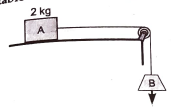 is 0.2. What would be the maximum mass of block B, so that the two blocks do not move ? The string and the pulley are assumed to be smooth and massless. Solution in Punjabi
is 0.2. What would be the maximum mass of block B, so that the two blocks do not move ? The string and the pulley are assumed to be smooth and massless. Solution in Punjabi
2.0 kg
4.0 kg
0.2 kg
0.4 kg
Step by step video & image solution for The coefficient of static friction, between block A of mass 2 kg and the table as shown in the figure is 0.2. What would be the maximum mass of block B, so that the two blocks do not move ? The string and the pulley are assumed to be smooth and massless. by Physics experts to help you in doubts & scoring excellent marks in Class 11 exams.
Updated on:21/07/2023Topper's Solved these Questions
Similar Questions
What is centre of mass of a system?
View SolutionA bend in a level road has radius of 100 m.Find the maximum speed with which a car turning this bend may have without skidding ,if the coefficient of friction between the tyres and road is 0.8.
View SolutionThe coefficient of static friction between the two blocks shown in figure is μ and the table is smooth. What maximum horizontal forced F can be applied to he block of mass M so that the block move together?

View SolutionThe coefficient of static friction mu_(s) between block A of mass 2kg and the table as shown in is 0.1 What would be the maximum mass value of blocks B so that the two bloks do not move ? The string and the pulley are assumed to be smooth and massless (g = 10m//s^(2)) .
View SolutionThe coefficient of static friction, μs between block A mass 2kg and the table as shown in the figure, is 0.2. What would be the maximum mass value of block B, so that the two blocks do not move ? The string and the pulley are asseumed to be smooth and massless (g=10m/s2)
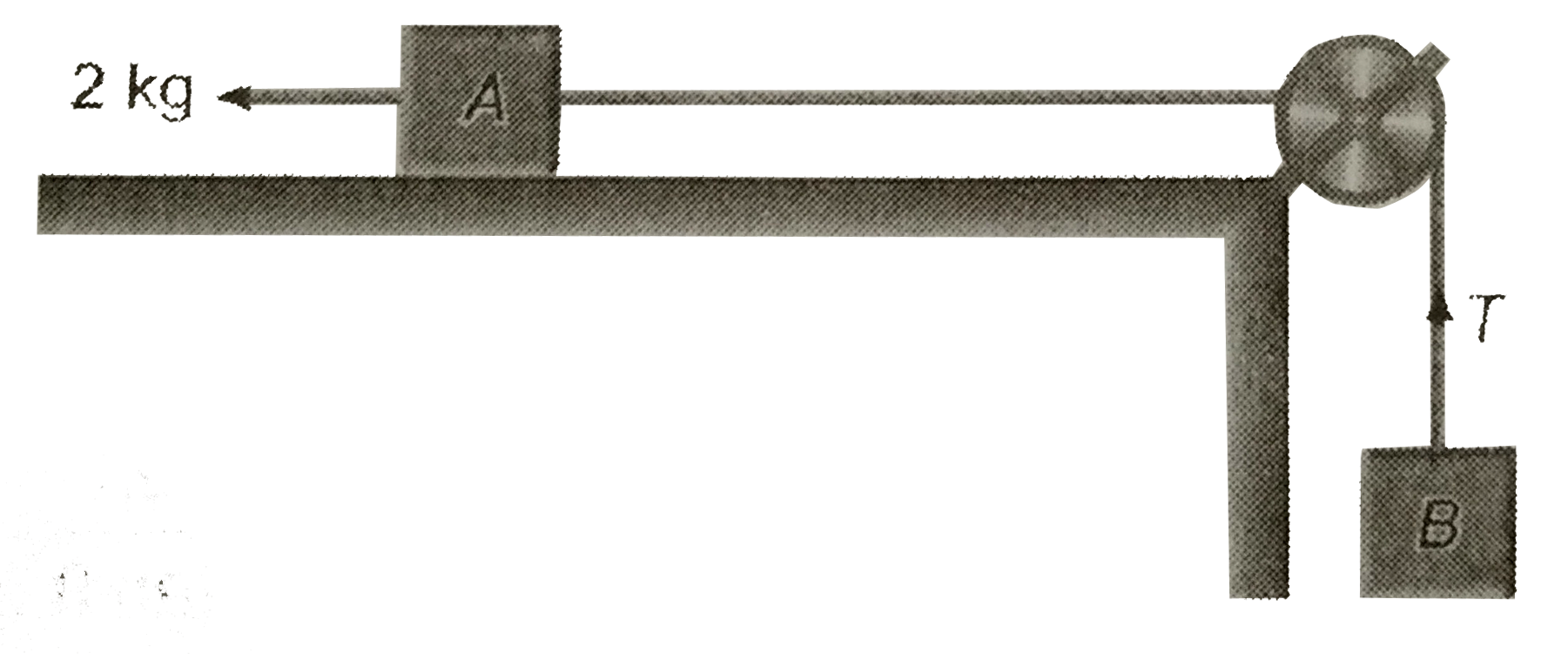
View SolutionThe coefficient of static friction, mu_(s) between block A of mass 2 kg and the table as shown in the figure is 0.2. What would be the maximum mass value of block B so that the two blocks do not move? The string and the pulley are assumed to be smooth and massless. (g=10m//s^(2))
View SolutionTwo blocks are connected over a massless pulley as shown in figure. The mass of block A is 10 kg and the coefficient of kinetic friction is 0.2 Block A sliders down the incline at constant speed. The mass of block B in kg is
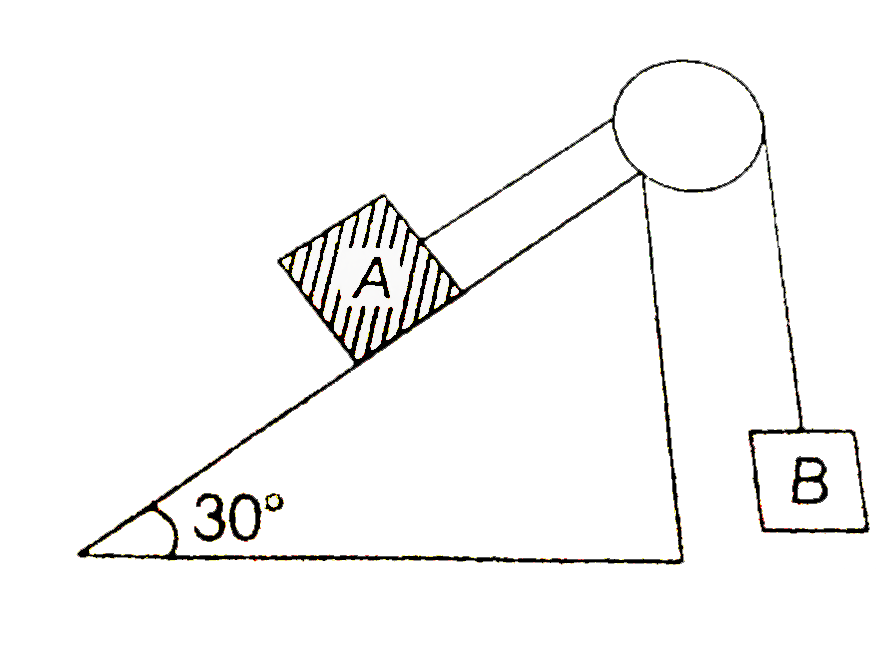
View SolutionTwo blocks are connected over massless pulley as shown in figure. The mass of block Ais 10 kg and the coefficient of kinetic friction is 0.2 .Block A sliders down the incline at constant speed. The mass of block B in kg is
View Solutionचित्र में दर्शाये अनुसार 2 किग्रा द्रव्यमान के ब्लॉक A तथा मेज के बीच स्थैतिक-घर्षण गुणांक 0.2 है | ब्लॉक B का अधिकतम द्रव्यमान क्या हो कि दोनों ब्लॉक गति न करे ? रस्सी तथा घिरनी चिकनी तथा भारहीन हैं (g = 10 मी/से2)

View SolutionThe coefficient of static friction μs, between block A of mass 2 kg and the table as shown in the figure is 0.2. What would be the maximum mass value of block B, so that two blocks do not move ? The string and the pully are assumed to be smooth and massless.
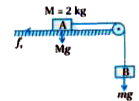
View SolutionThe coefficient of static friction μs, between block A of mass 2 kg and the table as shown in the figure is 0.2. What would be the maximum mass value of block B, so that two blocks do not move ? The string and the pully are assumed to be smooth and massless.

View SolutionThe coefficient of static friction between the two blocks shown in figure is μ and the table is smooth. What maximum horizontal forced F can be applied to he block of mass M so that the block move together?

View SolutionThe coefficient of static friction between the two blocks shown in figure is μ and the table is smooth. What maximum horizontal forced F can be applied to he block of mass M so that the block move together?

View SolutionThe coefficient of static friction, μs between block A of mass 2 kg and the table as shown in the figure is 0.2. What would be the maximum mass value of block B so that the two blocks do not move? The string and the pulley are assumed to be smooth and massless.(g=10m/s2)
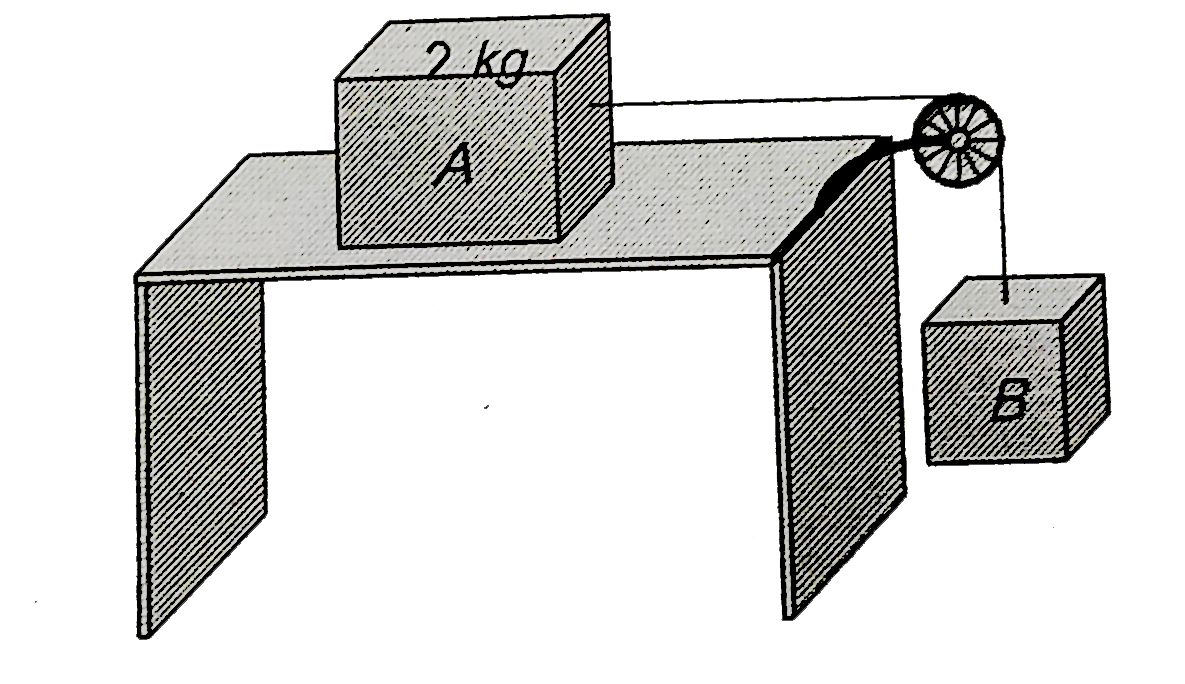
View SolutionTwo blocks are connected over a massless pulley as shown in figure. The mass of block A is 10 kg and the coefficient of kinetic friction is 0.2 Block A sliders down the incline at constant speed. The mass of block B in kg is
View SolutionThe coefficient of static friction, mu_(s) between block A mass 2kg and the table as shown in the figure, is 0.2. What would be the maximum mass value of block B, so that the two blocks do not move ? The string and the pulley are asseumed to be smooth and massless ( g=10m//s^(2) )
View Solution
